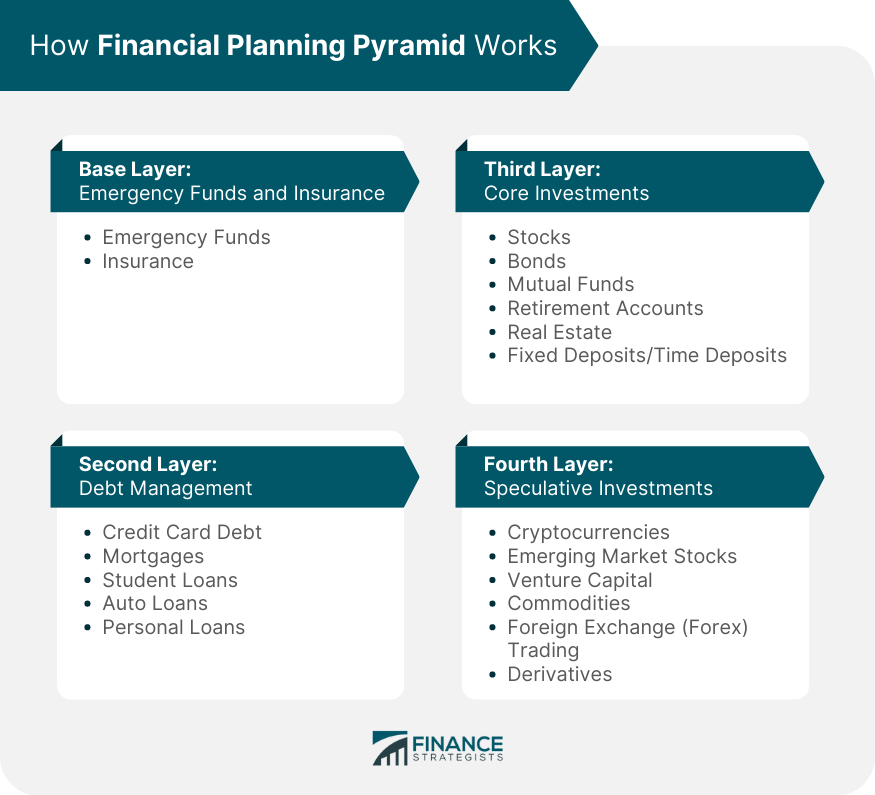The journey to financial independence isn't about overnight success—it's about building a strategic foundation that can weather any economic climate. Whether you're starting with nothing or looking to scale your existing wealth, understanding the critical pillars at each stage of wealth building can dramatically accelerate your progress.
Stage 1: Financial Stability - The Foundation
Before wealth can be built, financial stability must be established. This first crucial stage is about creating a solid platform from which all future growth becomes possible.
Pillar 1: Income Generation
The most fundamental element of financial stability is a reliable income source. This doesn't necessarily mean traditional employment—it could be freelancing, consulting, or a small business venture.
Pro Tip
Focus on developing high-demand skills that command premium compensation. Research by the Bureau of Labor Statistics shows that specialized technical skills can increase earning potential by 40-60% compared to general skills in the same field.
Pillar 2: Expense Management
Creating a sustainable financial ecosystem requires mastering the outflow of money. This isn't about extreme frugality but strategic allocation of resources.
- Implement zero-based budgeting to account for every dollar
- Distinguish between essential expenses and lifestyle choices
- Negotiate recurring expenses (insurance, subscriptions, services)
- Eliminate high-interest debt as a top priority
Real-world Example: Sarah started with $45,000 in debt and a $55,000 salary. By implementing aggressive expense management, she allocated 50% of her take-home pay to debt elimination while maintaining essential living expenses. Within 18 months, she eliminated all debt and redirected those funds to wealth-building activities.
Pillar 3: Emergency Preparedness
Financial stability requires protection against unexpected setbacks. Research shows that 40% of Americans would struggle to cover an unexpected $400 expense—a vulnerability that prevents wealth building.

The ideal emergency fund grows with your financial journey, from 1 month of expenses to 6+ months as wealth increases.
Stage 2: Wealth Accumulation - Building Momentum
Once stability is achieved, the focus shifts to actively growing wealth through strategic investment and income expansion.
Pillar 1: Strategic Investment
Wealth accumulation requires putting money to work through carefully selected investment vehicles aligned with your timeline and risk tolerance.
- Tax-advantaged accounts (401(k), IRA, HSA)
- Index funds for broad market exposure
- Real estate for income and appreciation
- Business equity for potentially higher returns
Pro Tip
The power of compound interest cannot be overstated. An investment of $10,000 with an 8% annual return becomes $21,589 in 10 years, $46,610 in 20 years, and $100,627 in 30 years—with no additional contributions.
Pillar 2: Income Multiplication
Truly accelerating wealth requires moving beyond the limitations of trading time for money. This means developing multiple income streams that can work simultaneously.
Real-world Example: Michael, a marketing professional, maintained his full-time position while developing a specialized consulting practice on evenings and weekends. Within two years, his side business generated 60% of his primary income with just 15 hours per week. He invested this additional income entirely into appreciating assets, dramatically accelerating his wealth timeline.
Pillar 3: Strategic Tax Planning
What you keep matters more than what you earn. Strategic tax planning is often the difference between moderate and substantial wealth accumulation.
Stage 3: Wealth Optimization - Scaling Success
As assets grow, optimization becomes increasingly important. This stage focuses on maximizing returns while protecting what you've built.
Pillar 1: Portfolio Optimization
As wealth grows, sophisticated portfolio management becomes essential. This includes:
- Strategic asset allocation across multiple classes
- Regular rebalancing to maintain optimal risk exposure
- Tax-loss harvesting to minimize liability
- Alternative investments for diversification
Pillar 2: Business Scaling or Acquisition
For many wealth builders, business ownership represents the most powerful wealth acceleration tool available.
ROI comparison between traditional investments and business ownership over a 10-year period.
Pillar 3: Wealth Protection
As assets grow, protecting them becomes increasingly important through:
- Appropriate insurance coverage (liability, property, life)
- Legal structures (LLCs, trusts, family limited partnerships)
- Estate planning for efficient wealth transfer
Stage 4: Financial Freedom - Maintaining and Leveraging Wealth
The final stage focuses on maintaining wealth while using it to create the lifestyle and impact you desire.
Pillar 1: Passive Income Development
Creating income streams that require minimal ongoing effort is the cornerstone of sustainable wealth.
Pro Tip
The "4% rule" suggests that withdrawing 4% of your investment portfolio annually provides a sustainable income stream that should last through retirement. For example, a $2.5 million portfolio could generate $100,000 annually without depleting principal over time.
Pillar 2: Legacy Planning
True wealth extends beyond personal consumption to creating lasting impact through:
- Strategic philanthropy
- Family education and wealth transfer
- Business succession planning
Pillar 3: Continuous Learning and Adaptation
Markets, tax laws, and economic conditions constantly evolve. Maintaining wealth requires staying informed and adaptable.
Real-world Example: The Johnson family maintained and grew their wealth through four generations by instituting a family education program that required each generation to develop financial literacy, business acumen, and investment knowledge before accessing significant capital.
The Timeline Reality
While the journey from financial instability to significant wealth is certainly possible, it's important to understand the realistic timeline. Research shows that:
- Most self-made millionaires take 12-20 years to reach seven-figure net worth
- The most common accelerators are business ownership, real estate investment, and specialized high-income skills
- Consistency in applying these principles matters more than occasional large financial wins
Pro Tip
Focus on your personal wealth-building rate rather than comparing to others. A consistent 15-20% annual growth in net worth—while ambitious—is achievable with the right strategy and will transform your financial situation over time.
Conclusion: Your Wealth Building Journey
Financial transformation isn't about a single strategy or investment—it's about systematically implementing the right pillars at each stage of your journey. By focusing on these fundamental elements and adapting them to your unique situation, you can create a reliable path to financial independence regardless of your starting point.
The most important factor isn't where you begin, but the systems you implement and your consistency in following them. Start with establishing stability, focus on strategic growth, optimize as you scale, and ultimately create the freedom that significant wealth can provide.




